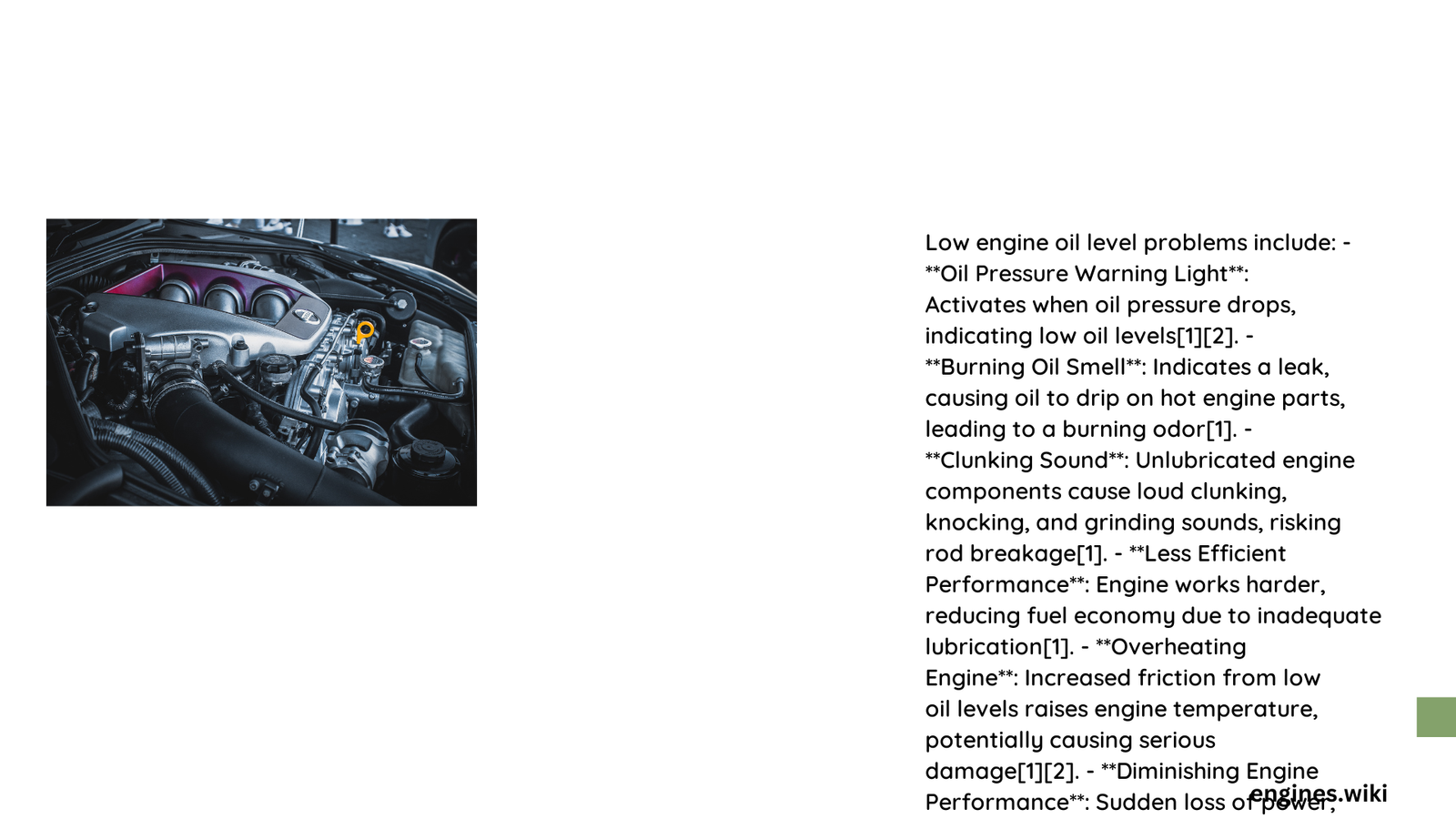Low engine oil level problems can silently destroy your vehicle’s engine, causing irreversible damage through increased friction, overheating, and accelerated wear. Understanding these issues is crucial for preventing costly repairs and maintaining your vehicle’s long-term performance and reliability. From warning signs like unusual engine noises to potential catastrophic failures, this comprehensive guide will help you recognize, diagnose, and address low engine oil level problems before they become expensive nightmares.
What Are the Primary Symptoms of Low Engine Oil?
How Can You Detect Low Oil Pressure?
When your vehicle experiences low engine oil levels, several critical symptoms emerge:
- Warning Light Indicators
- Oil pressure warning light illumination
- Sudden dashboard warning signals
-
Intermittent warning light flashes
-
Audible Engine Warnings
- Loud knocking sounds
- Grinding mechanical noises
- Persistent ticking from engine components
What Happens During Oil Starvation?
| Symptom | Potential Damage | Urgency Level |
|---|---|---|
| Engine Knocking | Potential Rod Failure | High |
| Burning Oil Smell | Potential Gasket Leaks | Medium |
| Reduced Performance | Decreased Fuel Efficiency | Low-Medium |
Why Do Oil Levels Drop?
Critical reasons for low engine oil levels include:
– Persistent oil leaks
– Worn piston rings
– Damaged engine gaskets
– Excessive oil consumption
– Infrequent maintenance
How Serious Are Low Engine Oil Level Problems?

Low engine oil levels can cause catastrophic damage within minutes. The lack of proper lubrication increases friction between moving metal components, generating extreme heat and accelerating wear.
Potential Consequences of Neglect
- Complete engine seizure
- Irreparable mechanical damage
- Expensive replacement costs
- Reduced vehicle lifespan
What Preventive Measures Can You Take?
- Regular Oil Checks
- Check oil levels monthly
- Use dipstick for accurate measurements
-
Maintain recommended oil levels
-
Scheduled Maintenance
- Follow manufacturer’s service intervals
- Use high-quality engine oils
- Replace oil filters consistently
How Much Can Low Oil Levels Cost?
Repair costs can escalate quickly:
– Minor repairs: $500 – $1,500
– Major engine work: $2,000 – $4,000
– Complete engine replacement: $4,000 – $8,000
Expert Recommendations
Professional mechanics suggest:
– Never ignore warning signs
– Address oil leaks immediately
– Use manufacturer-recommended oil grades
– Maintain consistent oil change schedules
When Should You Seek Professional Help?
Immediate professional intervention is necessary if you experience:
– Persistent warning lights
– Unusual engine noises
– Visible oil leaks
– Significant performance drops
Technical Insights
Modern engines typically consume 0.25 to 1 quart of oil per 1,000 miles. Consumption beyond this range indicates potential mechanical issues requiring thorough diagnostic evaluation.
Oil Viscosity Matters
Choose engine oils matching:
– Vehicle manufacturer specifications
– Operating temperature ranges
– Driving conditions
Conclusion
Understanding and proactively managing low engine oil level problems can save thousands in potential repairs. Regular maintenance, keen observation, and timely interventions are your best defense against catastrophic engine failure.
References:
– SAE International Oil Consumption Standards
– ASE Automotive Maintenance Guidelines
– Society of Automotive Engineers Research
